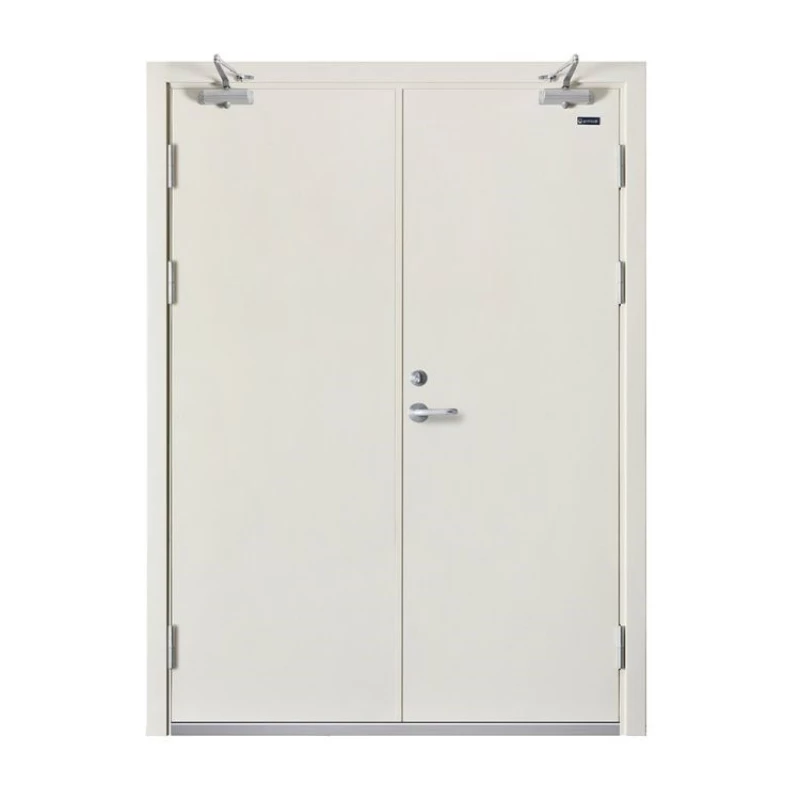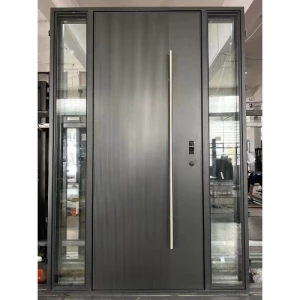Exclusive Online Offer White Steel Fire Proof Door
- Standard Size
- 2050*1200 (Accept Customization)
- Door Leaf Thickness
- 60mm (Accept Customization)
- Inner Filling
- Fire door core board (Accept Customization)
- Lock Set
- High Quality Main Lock+Side Lock+Up-Down Lock
- Surface Treatment
- Poder Coated/Heat Transfer(Customized)
- Open Direction
- Inward/Outward/Left/Right
- Accessories
- Handle; Lock;Hinge;Peephole;Door Bell;Bolts
Materials Used in Fireproof Doors
Introduction:
Fireproof doors are essential components in building safety, specifically designed to resist the spread of fire and provide valuable protection. In this article, we will explore the different materials commonly used in the construction of fire doors and their specific characteristics.
1. Core Materials
The core of a fire door plays a critical role in providing fire resistance. Several materials are used as core components, including:
1.1 Mineral Wool: Mineral wool is a popular choice for fire door cores due to its excellent fire-resistant properties. It consists of inorganic fibers that provide insulation and resist the spread of flames and heat.
1.2 Vermiculite Board: Vermiculite board is a lightweight material known for its high-temperature resistance. It expands when exposed to heat, creating a protective barrier against fire.
1.3 Ceramic Fiberboard: Ceramic fiberboard is made from high-temperature resistant fibers, offering exceptional fire resistance. It is lightweight and provides effective insulation against heat transfer.
2. Door Leaf Materials
The door leaf, or panel, of a fire door is responsible for forming a barrier against fire. Various materials are used for constructing the door leaf, including:
2.1 Steel: Steel is a common material choice for fire door leaf construction. It provides excellent strength, durability, and fire resistance. Steel doors are often used in commercial and industrial settings where higher fire ratings are required.
2.2 Timber: Timber, specifically fire-rated hardwood or solid core timber, is another option for fire door leaf construction. Timber doors offer a more natural aesthetic while still providing adequate fire resistance.
3. Facing Materials
The facing material of a fire door is the visible surface that can be seen when the door is closed. It contributes to the door's appearance and may have additional fire-resistant properties. Common facing materials include:
3.1 Fire-Rated Glass: Fire-rated glass is used in fire doors to provide visibility while maintaining fire resistance. It is specially treated to withstand high temperatures and prevent the spread of flames and smoke.
3.2 Laminate: Laminate facing materials are often used in fire doors, offering a range of decorative finishes. Fire-rated laminates provide both aesthetic appeal and fire protection.
4. Expansion material
Expansion materials are crucial components in fire doors, expanding when exposed to heat to seal gaps and prevent the passage of flames and smoke. Two common types of expansion materials used in fire doors are:
4.1 expansion Strips:expansion strips are installed around the edges of the door leaf and expand when heated, creating a fire-resistant seal.
4.2 expansion Paint:expansion paint is applied to the surfaces of the fire door and expands when exposed to heat. It provides an additional layer of fire protection.
Conclusion
Fire doors incorporate a variety of materials to achieve the necessary fire resistance and safety standards. From the core materials providing insulation and fire resistance to the facing materials ensuring visual appeal, each component serves a crucial role in the overall performance of a fire door. Understanding the different materials used in fire doors can help in selecting the appropriate door for specific fire safety requirements.
If you are interested, please contact USELUCK DOOR.
We have more categories for you. lf you can't find the products you want above,just fill in the form and tell us whatproducts you want to import from China.




















